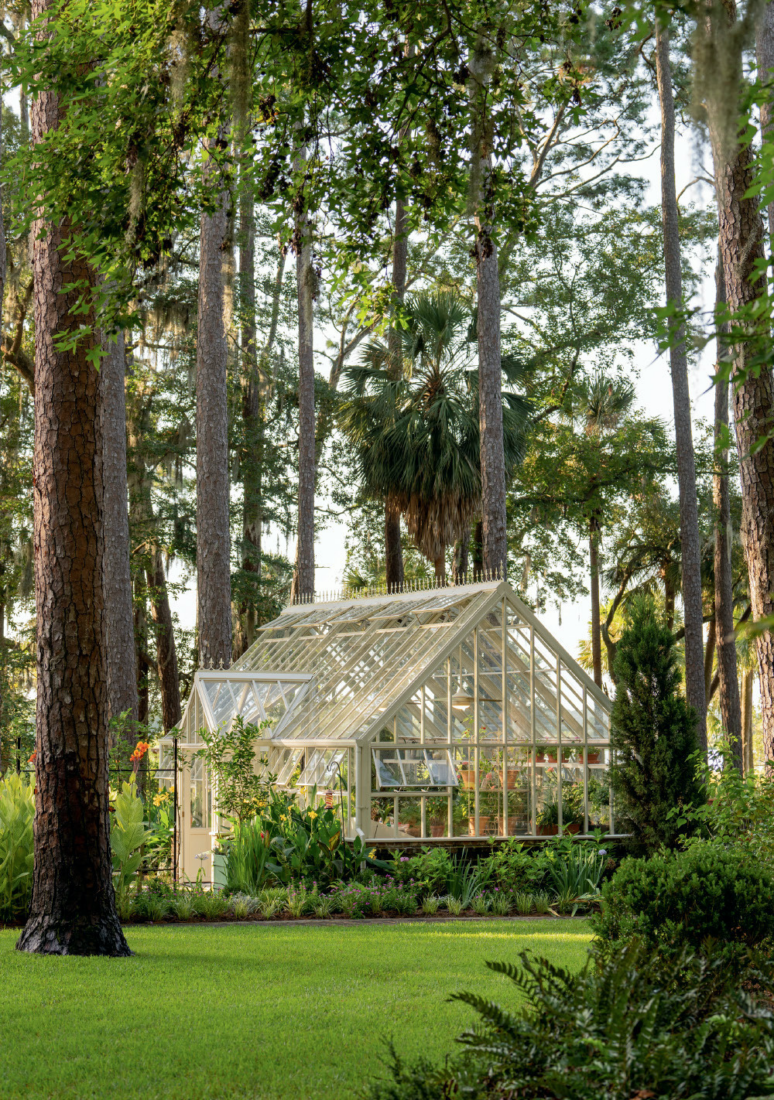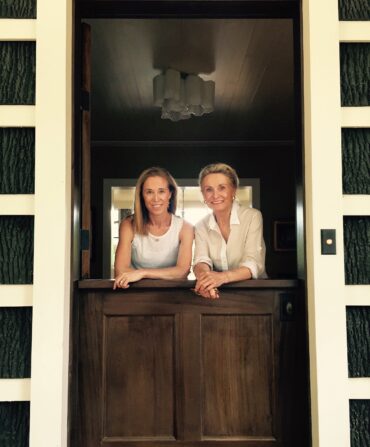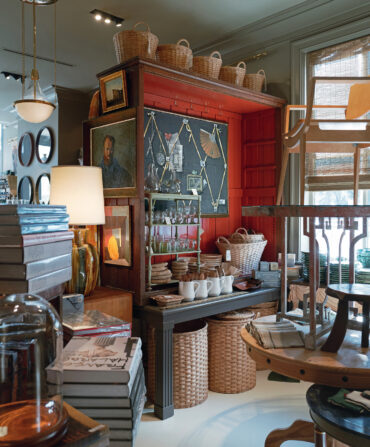The note in the envelope read, “I.O.U. a greenhouse.” Jenny Lynn Bradley treasured the promise, a Christmas gift more than a decade ago from her husband, Waldo, and she let her daydreams wander. She mused on the greenhouse of her childhood, the one near Lake Rabun in the North Georgia mountains, where her grandfather tended dahlias. And she considered the grounds of her current home outside Savannah on Sylvan Island, tucked along the banks of Herb River. She now had the chance to design a glass-walled garden room there, a place to sprout seedlings in even the chilliest days of late winter.
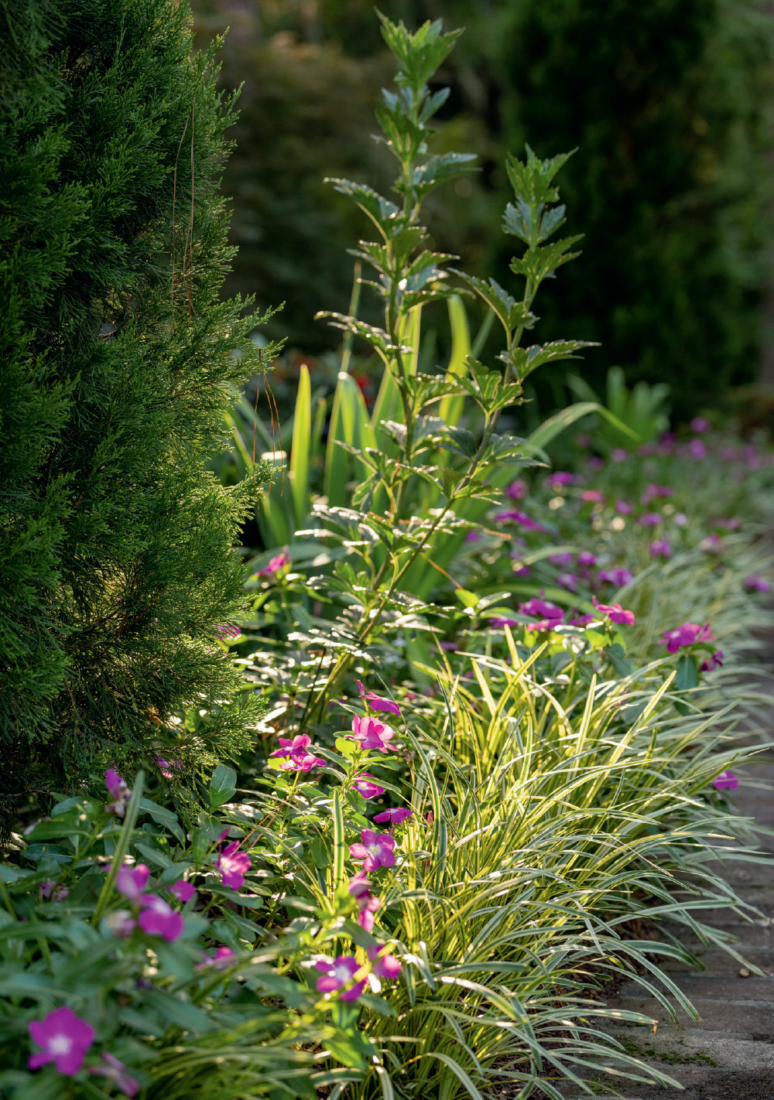
Bradley walked the property, scanning her collection of camellias and citrus in terra-cotta planters. As she started to scheme, “I had little places all over the yard with pots and things,” she recalls. For his part, Waldo had just two requests: Save as many of the mature pine trees as possible, and don’t block the view of the river.
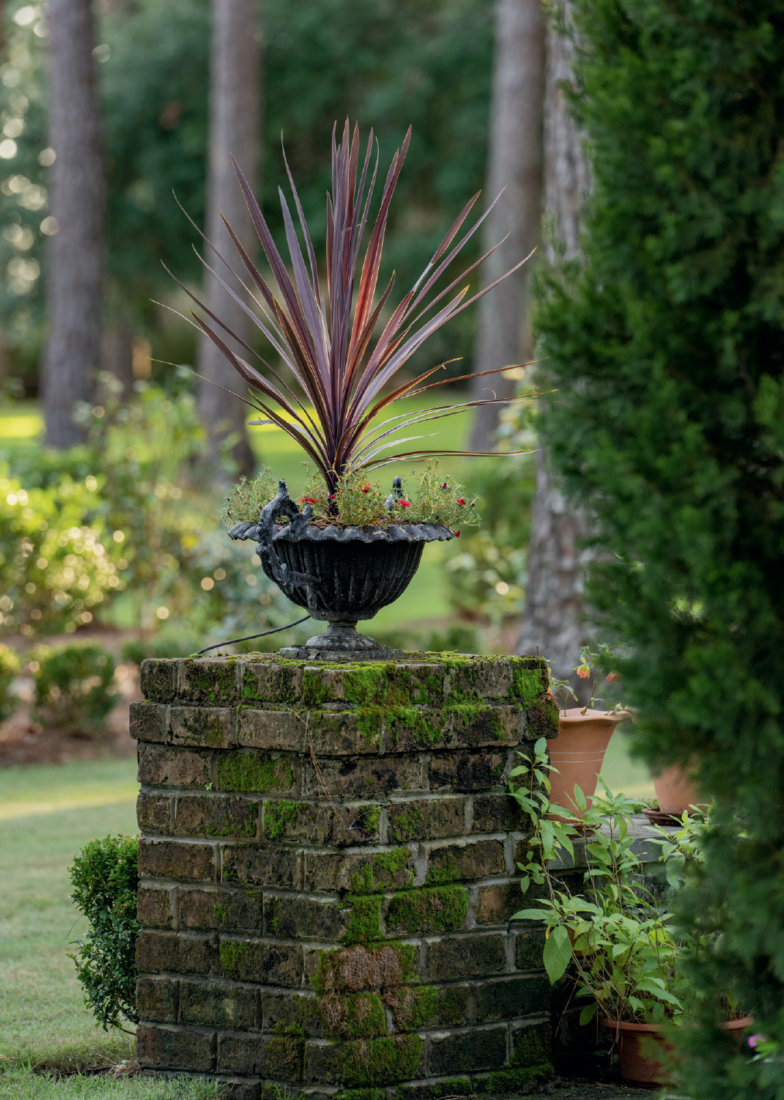
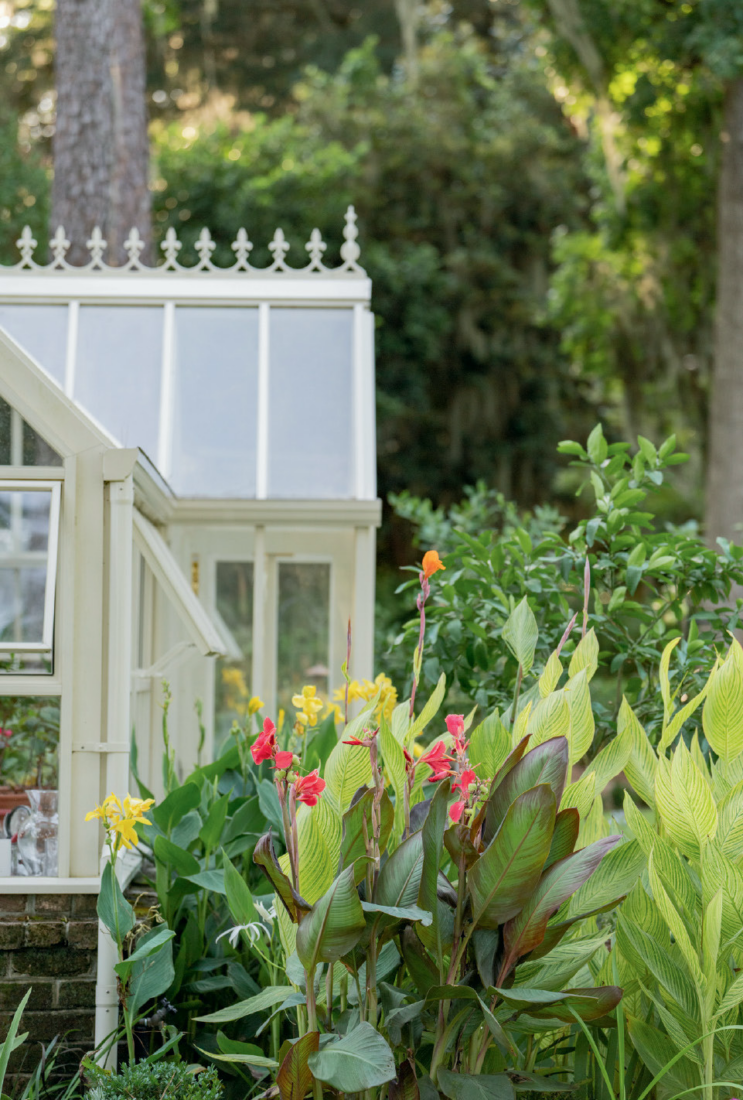
When she called a Savannah landscape architect and family friend, Thomas Angell of Verdant Enterprises, she told him, “I want the greenhouse to look like it has always been there.” Angell recommended a spot south of the house with strong sun exposure, where only a few pines would have to give way. “We ended up with a couple of shallow steps up to a parterre garden,” Angell says. He designed raised brick beds surrounding a central fountain, all drawing the eye to the place where a glass conservatory would eventually rise.
Covered structures for growing vegetables trace back to Roman times, but Southerners have perhaps been most influenced by the greenhouses popularized in eighteenth- and nineteenth-century France and England, where gardeners cultivated exotic pineapples, palms, and orchids far from their native habitats. When Bradley learned about Hartley Botanic, a company that makes Victorian-inspired glasshouses in Northern England and ships them all over the world, she knew she’d found her source.
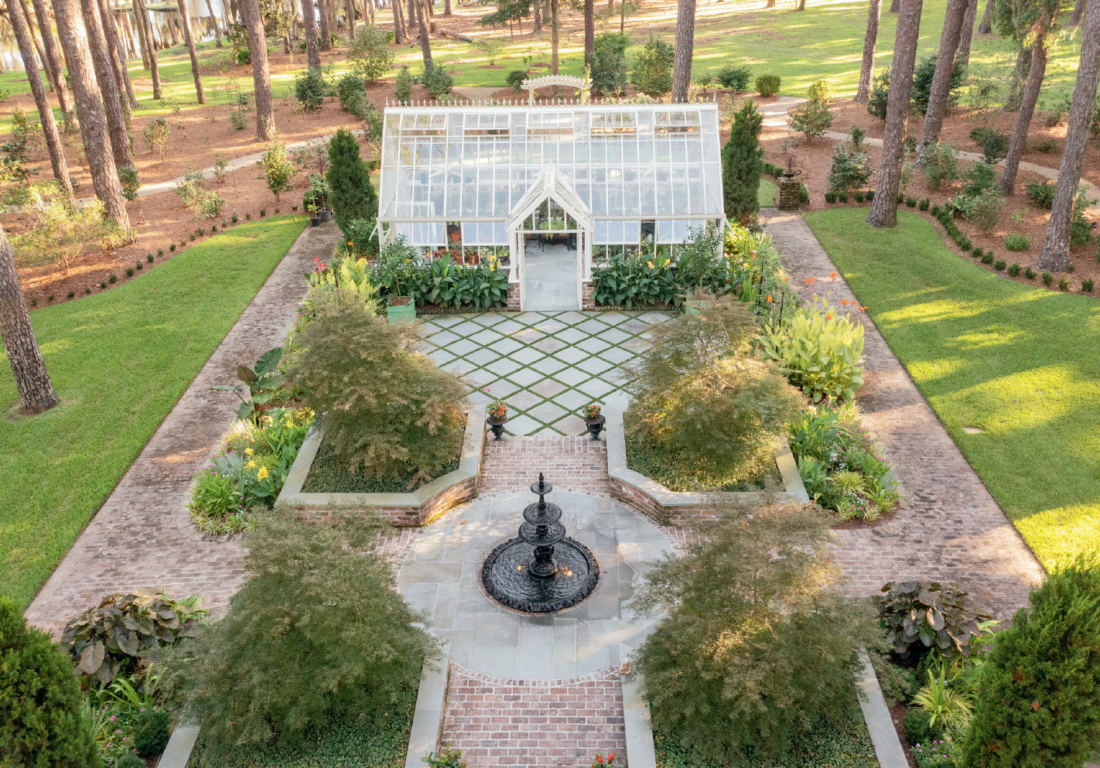
Using leftover Savannah-gray bricks from the main house, her crew laid a foundation—the landing spot for the fourteen-by-twenty-six-foot greenhouse, which arrived in three containers from the United Kingdom, along with a team of installers from Hartley’s U.S. headquarters near Boston. “Everything was numbered and ready,” Bradley remembers. “All I had to supply were the ladders and the property, and it was up in less than a week.”
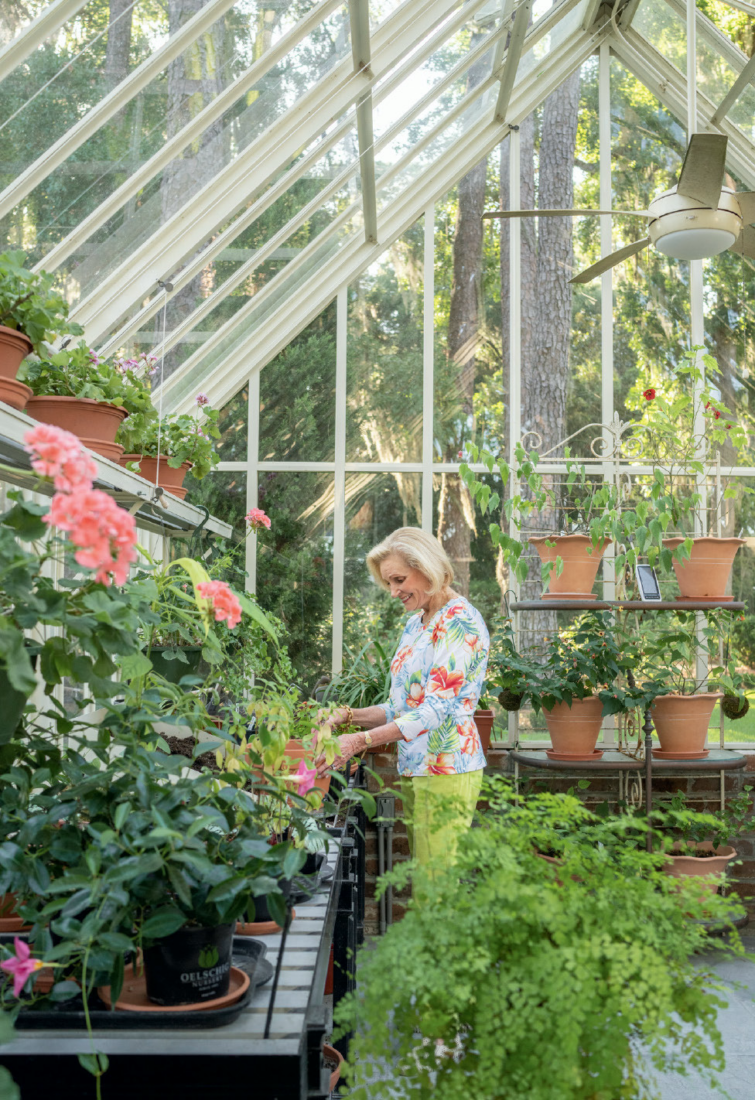
Decorative fleurs-de-lis line the rooftop of Bradley’s greenhouse, completed in 2019, but most of the design reflects practical garden know-how. “I didn’t want to slip and slide while I work, so we used bluestone for the flooring,” she says, “and then under the benches, there’s gravel for drainage.” The glass lets in every bit of daylight, and ceiling vents open and close hydraulically according to the weather. The rare Savannah freeze no longer threatens her young seedlings, emerging buds, or tender maidenhair ferns. “Savannah is in hardiness zone 8b,” she explains, “but because of our location on a tidal river, and having the greenhouse to grow plants in, I’ve promoted us to zone 9.”
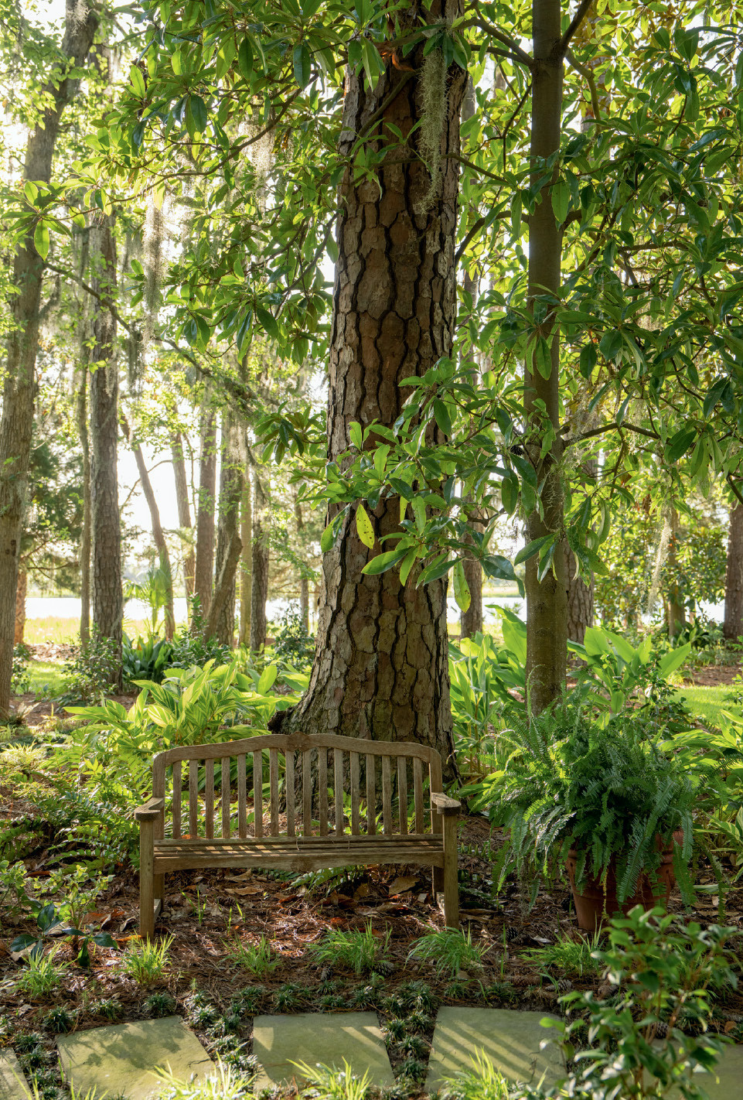
The greenhouse becomes an orangery when she shuffles her potted citrus in, and Bradley harvests grapefruits, kumquats, oranges, tangerines, satsumas, limes, and Meyer lemons throughout the coldest months. Her camellias wind down a path near the greenhouse and number more than five hundred varieties, including a group of ten that honor the First Ladies of Georgia. “I collect the seeds as they drop and use the greenhouse for a warm place to propagate them.” She has also mastered the technique of air layering, cloning older camellias with cuttings wrapped in sphagnum moss. “A favorite of mine is Borom’s Gem, a huge deep pink bloom that is still blooming for me in mid-March, or the Miss Lyla, a large white formal bloom with a faint splotch of pink, named for a Savannah lady who was the mother of a dear friend.”
On a recent stroll, Bradley kept finding acorns. “I was under a beautiful live oak, and so I picked up as many acorns as I could hold in my hands and pockets,” she says. She often thinks about her husband, who died last year at age eighty-eight, three years after his greenhouse gift came to life. Most of his trees were spared, and he lived long enough to see his wife of fifty-eight years spend entire afternoons with her hands in soil. “I’m going to try to grow some live oaks,” she says of her pocket full of acorns. She’ll soak each one, bury it in warm dirt, and wait for it to sprout in her greenhouse. One day she’ll carry the saplings outside and plant them, hoping they root where there’s a clear view out to Herb River.


